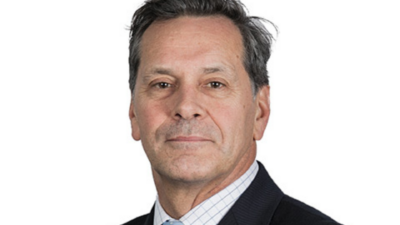Manager bright spots despite fee ‘intolerance’
(pictured: Daniel Celeghin)
By Greg Bright
For future fee revenue for fund managers operating in the Asia Pacific region only one country matters – China. While Australia accounts for 16 per cent of the regional market it will pay only 10 per cent of the fees. But there are bright spots for certain managers.
According to work by Casey Quirk, the global management consulting firm which specialises in funds management, China accounts for 54 per cent of the US$9 billion fee revenue opportunity in Asia Pacific, while currently accounting for only 28 per cent of the assets.
Australia and Japan, on the other hand, account for 16 per cent and 32 per cent of the assets, respectively, but only 10 per cent and 11 per cent of the fee opportunity, because of the comparatively large size of their institutional markets. In China, it is almost all high-paying retail business where the growth is.
Daniel Celeghin, Casey Quirk’s regional partner, told the Russell Investments Summit in Sydney last week that shifts in asset allocation by Australian funds meant that new opportunities would arise among alternatives and international mandates. His firm predicted Australian domestic investments would drop from 42 per cent to 26 per cent over the next few years and allocations to alternatives would rise from 19 per cent to 41 per cent.
“So there will be revenue opportunities, assuming there is not a tremendous amount of insourcing of alternatives management,” he said. The managers which would have an important role to play going forward were:
- high-alpha active managers
- those offering cost-efficient beta
- those with asset allocation expertise, through multi-asset products and services, an
- “solutions-led” distributors, with open architecture allocation products and services.
But within Australia and the rest of the Asia Pacific individuals were overtaking institutional investors as the main future growth drivers. Globally, 75 per cent of the total fee pool will be “individuals driven”, he predicted.
Across the industry, asset growth has been flat since 2007 when it was running at 6.7 per cent annually. It “collapsed” in 2008, recovered to 2.1 per cent between 2011-2014 and fell back to 1.6 per cent in 2015. “We don’t see it coming back any time soon,” Celeghin said. “That’s the new normal.”
Asset-owner demand would focus on new active strategies and outcome-oriented services, with emerging markets driving new flows in the industry globally. Australia broke this trend, thanks to the superannuation guarantee, but had its own challenges, particularly investor (in)tolerance to pay fees comparable with other markets.
Examples of “new active” managers included unconstrained and concentrated portfolios and in the unlisted space – those which could not be easily replaced with an index product.
Peter Gunning, Russell’s chief executive for Asia Pacific and a former global CIO of Russell, said it was only fair that investors continued to put pressure on manager fees. “But I hope it doesn’t get to the stage where good fund managers say the Aussies are not prepared to pay and then they forget about us. That’s a worry.”
About 240 delegates attended the conference, including both super funds and retail advisors.
Len Brennan, the global chief executive, said Russell was a unique asset manager which delivered complex solutions. Its five core capabilities were: capital markets insights; manager research; factor exposures; asset allocation; and, portfolio implementation.









